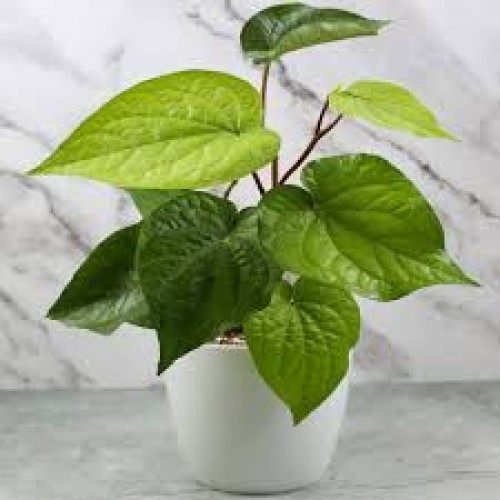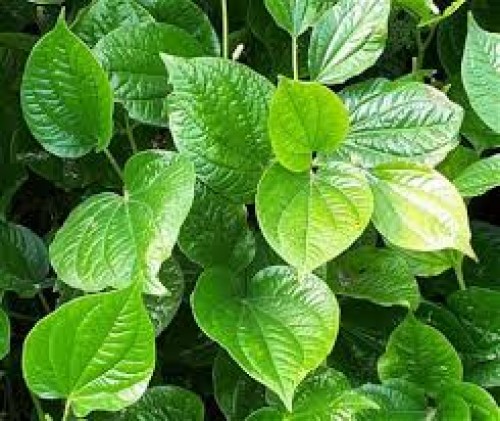60%
off
off
-
Sold
-

-

out
Pan Plant (Betel Leaf)
Features
- Scientific Name: Piper betle
- Family: Piperaceae
- Origin: Native to Southeast Asia, widely cultivated in India and other tropical regions
- Growth Habit: Evergreen, perennial, climbing vine with glossy, heart-shaped leaves
- Height: Can grow up to 10–15 feet with proper support
- Climate: Thrives in warm, humid climates with partial shade
Uses
- Culinary: Leaves are commonly used to prepare "paan," a traditional chew made with areca nut and other ingredients
- Medicinal: Known for digestive, antiseptic, and anti-inflammatory properties; used in traditional remedies for various ailments
- Religious & Cultural: Integral part of rituals and ceremonies in many South and Southeast Asian cultures
Care Guide
Light
- Prefers partial shade; avoid direct, harsh sunlight
Watering
- Keep soil consistently moist but not waterlogged; ensure good drainage
Soil
- Requires fertile, well-draining soil rich in organic matter
Temperature & Humidity
- Optimal temperature range: 15°C to 35°C (59°F to 95°F)
- High humidity levels are beneficial
Fertilization
- Apply balanced organic fertilizer monthly during the growing season
Propagation
- Propagated through stem cuttings; root them in water or moist soil
Support
- Provide a trellis or support for climbing vines
Disclaimer
Important: While the Pan Plant has various traditional uses, it's essential to consult with a healthcare professional before using it for medicinal purposes.
- Consumption: Chewing betel leaves with areca nut and tobacco is associated with health risks, including oral cancers; moderation and caution are advised
- Allergies: Some individuals may experience allergic reactions; discontinue use if adverse effects occur
- Pregnancy & Nursing: Pregnant or nursing women should consult a doctor before consuming betel leaves